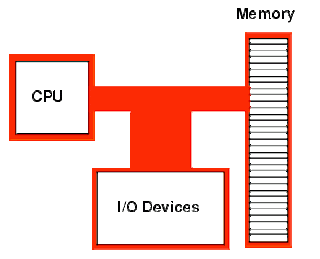> CPU
CPU is the brain of a microcontroller
.CPU is responsible for fetching the instruction, decodes it, then finally
executed. CPU connects every part of a microcontroller into a single system.
The primary function of CPU is fetching and decoding instructions. Instruction
fetched from program memory must be decoded by the CPU.
> Memory
The function of memory in a
microcontroller is same as microprocessor. It is used to store data and
program. A microcontroller usually has a certain amount of RAM and ROM (EEPROM,
EPROM, etc) or flash memories for storing program source codes.
> Parallel input/output ports
Parallel input/output ports are
mainly used to drive/interface various devices such as LCD’S, LED’S, printers,
memories, etc to a microcontroller.
> Serial ports
Serial ports provide various serial
interfaces between microcontroller and other peripherals like parallel ports.
> Timers/counters
This is the one of the useful
function of a microcontroller. A microcontroller may have more than one timer
and counters. The timers and counters provide all timing and counting functions
inside the microcontroller. The major operations of this section are perform
clock functions, modulations, pulse generations, frequency measuring, making
oscillations, etc. This also can be used for counting external pulses.
> Analog to Digital Converter (ADC)
ADC converters are used for
converting the analog signal to digital form. The input signal in this
converter should be in analog form (e.g. sensor output) and the output from
this unit is in digital form. The digital output can be use for various digital
applications (e.g. measurement devices).
> Digital to Analog Converter (DAC)
DAC perform reversal operation of ADC
conversion.DAC convert the digital signal into analog format. It usually used
for controlling analog devices like DC motors, various drives, etc.
> Interrupt control
The interrupt control used for
providing interrupt (delay) for a working program .The interrupt may be
external (activated by using interrupt pin) or internal (by using interrupt
instruction during programming).
> Special functioning block
Some microcontrollers used only for
some special applications (e.g. space systems and robotics) these controllers
containing additional ports to perform such special operations. This considered
as special functioning block.








